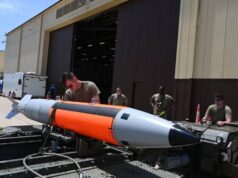Rising India-Saudi Arabia relations
Saudi Arabia’s crown prince is expected to take a detour with a one-day visit to India in mid-November

India and the Kingdom of Saudi Arabia have shared a rich, colourful history panning all the way back to 1947, the year of India’s independence.
However, bilateral ties between the two countries had existed for much longer, pre-dating colonial times, when trade between the two nations was of monumental importance, and Arabia held a monopoly over spice trade with India.
Later, in India’s post-independence era, the two nations put in conscious efforts to foster and maintain these relations of trade, security and cooperation which are quite evidently advantageous to both.
Saudi Arabia’s crown prince, Prince Mohammed bin Salman, is expected to take a detour with a one-day visit to India in mid-November, while on his way to the upcoming G20 summit in Bali.
Personal visits between leaders of the two nations have been a special part of the relationship that India and Saudi Arabia share, a long-standing custom which has been in place since 1955.
Dating back to Jawaharlal Nehru and King Saud bin Abdulaziz Al Saud, political visits have always led to pledges for strengthening ties further, as well as additional agreements to work together in emerging areas of importance for both countries.
King Abdullah’s visit to India in January 2006 served as a turning point in the pre-existing ties between the two countries, as the turn of the 21st century now saw the signing of the Delhi Declaration, ushering in a new era of bilateral ties and renewed aims to explore and meet together.
Over the past decade, relations of mutual interest and cooperation have grown considerably between the two nations; the 2010 Riyadh visit of Prime Minister Manmohan Singh led to the signing of the ‘Riyadh Declaration’, through which bilateral relations between the countries were taken to the next level of “strategic partnership”.Aaààa
The shared values of Saudi Arabia and India have made it easy for the countries to collaborate in various areas of development for both countries, including those of security, defence, energy, civil aviation, and small industries amongst others.
In the past decade, New Delhi and Riyadh have moved beyond occupying mere limited-capacity roles of buyer and seller of energy sources or crude oil; since 2016, there has been an escalation in cooperation along political and economic lines.
The expanding ties that the two countries have had in the past 6 years have streamlined the growth of interest, investments and the stakes each of these two has in the other respectively.
Saudi Arabia is India’s 4th largest trade partner, only after the US, China and the UAE, while India had emerged as Saudi’s second-largest trade partner for the first three-quarters of 2021.
18 per cent of India’s energy needs are fulfilled through imports from the Kingdom of Saudi Arabia, including crude oil and LPG.
For the financial year of 2021-2022, the bilateral trade between the two was valued at INR 342400 Crores with India importing INR 272000 Crores worth of commodities and exporting a sizeable INR 70080 Crores (an increase of nearly 50 per cent from the previous year)
Under the present central government in India, the Kingdom has, over the years, pledged more and more in terms of investments in India.
In 2019, Saudi Arabia announced a plan to invest close to INR 800000 Crores in India; in that year alone, as Crown Prince Salman’s visit to India took place, followed by Indian Prime Minister Narendra Modi’s visit to the Kingdom, 18 MoUs were signed by the countries across the varied fields of tourism, housing, security, defence production, industries, civil aviation and medical products amongst others.
Saudi Arabia clearly recognizes a strong partner in India, as the middle eastern giant continues to deepen ties of collaboration. India, with her position as the world’s fifth-largest economy, and carrying the third-largest defence budget, has made clear the capacity she holds to influence the international order.
India a rising Super Power both economically and militarily, has always expressed independence in foreign relations and has began asserting itself recent years.
It has refused to toe the line with any particular power USA or Russia or any other lowly ones – instead choosing to cultivate friendly, strategic relations with most nations ( – has bolstered its image on the global stage.
With the projection of this impregnable position, Saudi Arabia- which in itself is attempting to establish its image beyond a mere energy exporter- is bound to see the advantages of engaging with India the third largest World Economy in PPP terms.
With its economy being the fastest-growing in the G-20, Prince Salman is focused on diversifying the economy and creating jobs as part of his ‘Vision 2030’ plans for his country.
The statement from Saudi’s Investment Minister, Khalid al-Falih, saying “We are the biggest economy; we are the geopolitical capital of the region”, neatly encapsulates the dream the Kingdom is sowing for its coming years.
The crown Prince is well on his way to revolutionizing the country’s society and economy by putting conservative values and strategies on the back burner, pulling out young, luxurious and exciting economic opportunities for the Kingdom to dabble in – one which matches the energy and mind-set of both, the future generation of the country as well as the governance under the glamorous Prince.
Riyadh has been projecting itself as the ideal hub for finance and tourism, while concrete measures are being taken to turn this dream into reality. The country rolled out its first ‘integrated economic zone’ in November this year, in order to attract foreign investments and to get big businesses to make homes in the Middle Eastern country.
The economic zone offers to be a tax-free endeavour for companies for up to 50 years; the brand Apple has already signed on to set up its Middle East distribution hub in the region.
The SAMA (the Saudi Central Bank) has also been working to come up with policies and implementable strategies which bolster Riyadh’s bid to become the next regional financial technology hub.
With both countries steadily investing in the economy of the other, future prospects for further collaborations seem bright. A host of major Indian corporate groups already have a booming presence in Saudi, including Tata, Wipro, TCS and L&T, just to name a few.
The upcoming visit of the Saudi Crown Prince entails a host of engagements the two countries will embark on, in the sphere of trade and investment.
The countries have been mulling over the possibility of opening up to trading in local currencies–the feasibility of introducing Rupee-Riyal trade, as well as undertaking large-scale joint projects like refineries and infrastructure projects for fuel storage.
The possibilities for the two countries to engage in energy diplomacy are endless; Saudi Arabia became a signatory for Indian PM Narendra Modi’s International Solar Alliance in 2019. The two allies working on renewable energy projects, however, could be the ground-breaking move for their partnership.
The beaming prospect of setting up deep sea cables for renewable electricity grids, which will essentially link the Gulf region with South Asia, will create a green energy network across the regions.
Given that fossil fuels are expected to run out by 2060, with no indication of global consumption slowing down, this partnership, while pledging to undertake similar sustainable projects, could be the global need of the hour.




